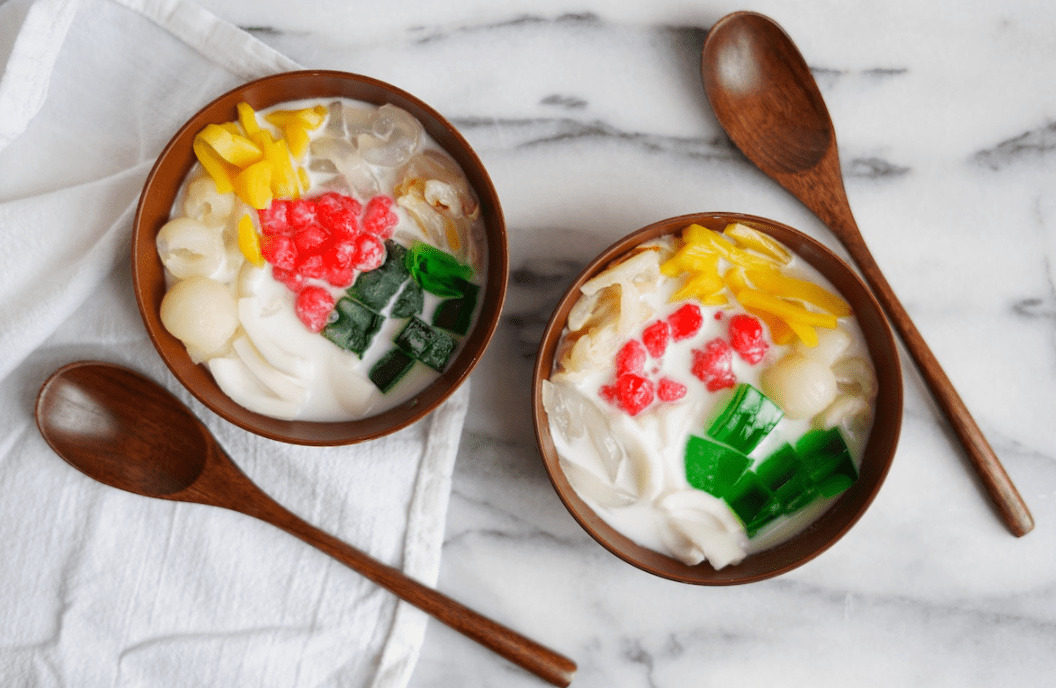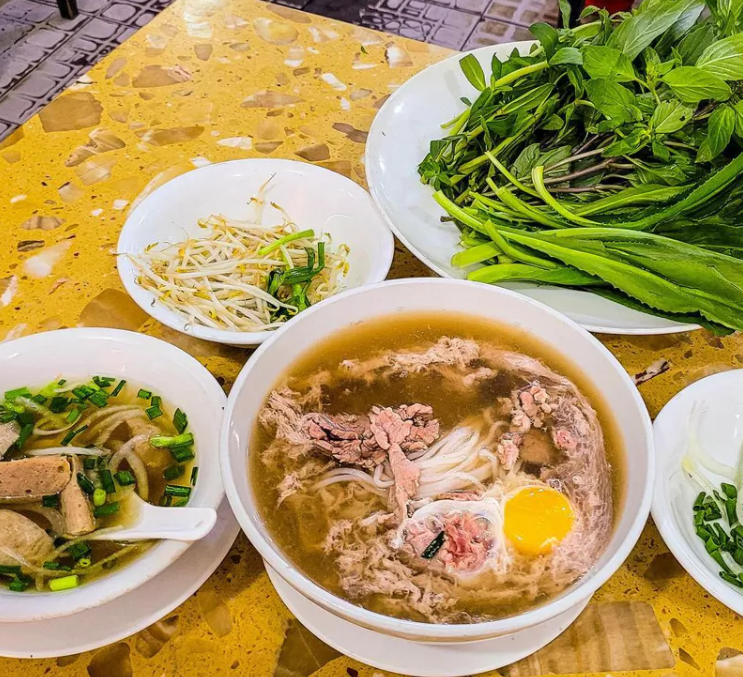The Ultimate Guide to Vietnamese Fruits: Exotic Flavors from the Tropics

目次
1. Introduction
Vietnam, with its tropical climate and fertile land, is home to some of the most delicious and unique fruits in the world. From sweet and juicy mangosteens to the strong aroma of durians, Vietnamese fruits offer an exciting experience for locals and visitors alike. This guide explores some of the most popular fruits in Vietnam, their health benefits, and the best ways to enjoy them.
2. Popular Fruits in Vietnam
2.1 Mangosteen (Măng Cụt)
Often referred to as the “Queen of Fruits”, mangosteen is a small, round fruit with a thick purple rind and soft, white flesh inside. It has a sweet and slightly tangy flavor, often compared to a mix of peach, citrus, and pineapple.
- Season: May to August
- Health Benefits: High in antioxidants, anti-inflammatory properties, and supports immune health.
- How to Eat: Cut the thick rind open and enjoy the juicy white segments inside.
2.2 Durian (Sầu Riêng)
Dubbed the “King of Fruits”, durian is famous for its strong smell and creamy texture. While some people love it, others find its pungent aroma overwhelming.
- Season: May to September
- Health Benefits: Rich in fiber, potassium, and vitamins B and C.
- How to Eat: Eat fresh or use in desserts like durian ice cream and sticky rice.
2.3 Rambutan (Chôm Chôm)
This hairy-looking fruit is closely related to lychee and longan. Beneath its red, spiky shell is a juicy, translucent flesh with a sweet and slightly acidic taste.
- Season: May to September
- Health Benefits: High in vitamin C and iron, boosts energy levels.
- How to Eat: Peel off the outer skin and eat the sweet flesh inside.
2.4 Dragon Fruit (Thanh Long)
With its vibrant pink or yellow skin and white or red flesh speckled with tiny black seeds, dragon fruit is one of the most visually striking fruits in Vietnam.
- Season: All year round, peak from May to October
- Health Benefits: Low in calories, rich in fiber, antioxidants, and vitamin C.
- How to Eat: Slice it in half and scoop out the flesh with a spoon, or cut into cubes.
2.5 Longan (Nhãn)
Longan, meaning “dragon’s eye”, has a translucent, juicy flesh with a sweet floral flavor. It is often compared to lychee but has a stronger taste.
- Season: June to August
- Health Benefits: Improves sleep quality, supports digestion, and boosts immunity.
- How to Eat: Peel off the thin brown skin and eat the flesh inside, avoiding the seed.
2.6 Jackfruit (Mít)
Jackfruit is the largest tree-borne fruit in the world and has a unique, chewy texture with a sweet and tropical aroma.
- Season: March to June
- Health Benefits: Packed with fiber, vitamin A, and antioxidants.
- How to Eat: Remove the yellow pods from the fibrous skin and eat fresh or cooked in desserts.
2.7 Star Apple (Vú Sữa)
Also known as “milk fruit”, star apple has a round shape with purple or green skin and a creamy, sweet interior.
- Season: November to April
- Health Benefits: High in fiber, promotes digestion and hydration.
- How to Eat: Cut in half and scoop out the flesh with a spoon, or squeeze and drink the juice.
2.8 Soursop (Mãng Cầu Xiêm)
Soursop has a spiky green exterior and soft, fibrous white flesh with a tangy-sweet taste, often compared to a mix of strawberry and pineapple.
- Season: All year round
- Health Benefits: Boosts immune system, supports digestion, and may have anti-cancer properties.
- How to Eat: Cut open and eat the flesh raw, removing the seeds, or blend into juices and smoothies.
2.9 Sapodilla (Hồng Xiêm)
Sapodilla has a brown, rough skin and soft, caramel-like flesh with a sweet, malty flavor.
- Season: September to December
- Health Benefits: Good for digestion, high in vitamins A and C.
- How to Eat: Peel and eat raw or blend into smoothies.
3. Where to Find the Best Vietnamese Fruits
3.1 Local Markets
Vietnamese wet markets are the best places to find fresh, seasonal fruits. Some of the most famous markets include:
- Ben Thanh Market (Ho Chi Minh City)
- Dong Xuan Market (Hanoi)
- Han Market (Da Nang)
3.2 Supermarkets and Specialty Stores
If you prefer a more convenient shopping experience, major supermarkets such as Co.opmart, Vinmart, and Lotte Mart offer a wide range of fresh fruits.
3.3 Street Vendors
One of the best ways to enjoy Vietnamese fruits is to buy them from street vendors. Vendors often sell pre-cut fruit, making it easy to enjoy on the go.
4. How to Enjoy Vietnamese Fruits
4.1 Fresh and Raw
Most Vietnamese fruits are best enjoyed fresh. Simply peel, cut, and eat!
4.2 Juices and Smoothies
Vietnamese fruit smoothies (Sinh Tố) and juices (Nước Ép) are popular street drinks, with combinations like:
- Sinh Tố Bơ (Avocado Smoothie)
- Sinh Tố Mãng Cầu (Soursop Smoothie)
- Nước Ép Chanh Leo (Passionfruit Juice)
4.3 Desserts and Snacks
Many Vietnamese desserts incorporate tropical fruits, such as:
- Chè (Sweet Soup) – A mix of fruits, beans, coconut milk, and jelly.
- Bánh Chuối (Banana Cake) – A popular street dessert made from ripe bananas.
- Dried Fruits (Trái Cây Sấy Khô) – Common snacks include dried mango, coconut, and jackfruit.
5. Conclusion
Vietnam is a paradise for fruit lovers, offering an incredible variety of exotic and delicious tropical fruits. Whether you’re strolling through a bustling market, enjoying a fresh fruit smoothie, or indulging in a local dessert, the flavors of Vietnamese fruits provide an unforgettable culinary experience.
Next time you’re in Vietnam, be sure to explore the diverse world of tropical fruits and savor the natural sweetness of this vibrant country!
(Photo by Unsplash.com)



